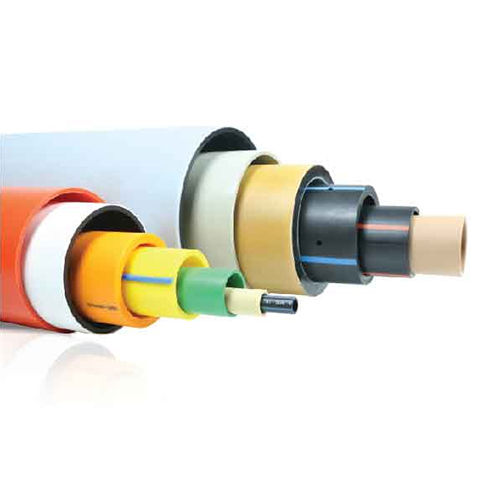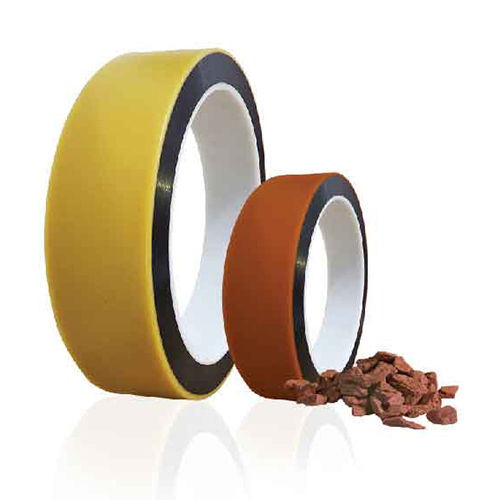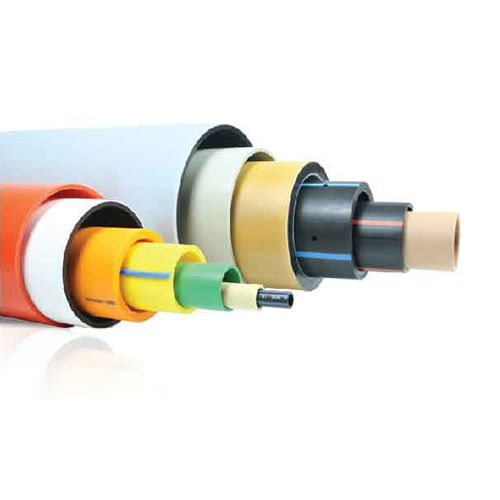
Multi Layer Pipes
100.0 INR/Meter
Product Details:
- Diameter 16mm, 20mm, 25mm, 32mm
- Material Grade Food grade
- Working Presssure 6 - 10 bar
- Usage Residential, commercial, and industrial piping systems
- Thread Type BSP (British Standard Pipe)
- Fittings Brass or polymer fittings
- Capacity Suitable for low to high volume applications
- Click to view more
X
Multi Layer Pipes Price And Quantity
- 1000 Meter
- 100.0 INR/Meter
Multi Layer Pipes Product Specifications
- 16mm, 20mm, 25mm, 32mm
- Food grade
- 6 - 10 bar
- Residential, commercial, and industrial piping systems
- BSP (British Standard Pipe)
- Brass or polymer fittings
- Suitable for low to high volume applications
- PEX-AL-PEX (Cross-linked Polyethylene - Aluminum - Cross-linked Polyethylene)
- 16mm, 20mm, 25mm, 32mm (Others available on request)
- Round
- High thermal resistance, leak-proof, flexible, corrosion-resistant, scale-free
- Smooth
- Hot and cold water plumbing, radiant floor heating, gas distribution
- Yes
- Customizable, standard rolls available (typically 100m/200m per coil)
- Compression Fitting
- Multi Layer Pipe
- Up to 10 bar
- Plain end, compression joint
Product Description
Multi-layer pipes, also known as composite pipes or multi-layered piping systems, are designed to combine the advantages of different materials into a single piping solution. These pipes are typically used in various applications, including plumbing, heating, and industrial systems. Here are some key features, benefits, and applications of multi-layer pipes:
Features:
1. Layered Construction: Multi-layer pipes consist of several layers of different materials, typically including an inner layer, one or more middle layers, and an outer layer.
- Inner Layer: Often made of cross-linked polyethylene (PEX), polyethylene (PE), or polybutylene (PB), which is resistant to corrosion and chemical damage.
- Middle Layer(s): Usually consist of aluminum or other metals, providing rigidity, strength, and barrier properties (such as oxygen diffusion resistance).
- Outer Layer: Made of plastic materials like PEX, PE, or polyvinyl chloride (PVC), providing additional protection against external damage and UV radiation.
- Durability: The combination of materials enhances the overall strength and durability of the pipes, making them resistant to various types of damage such as corrosion, abrasion, and impact.
2. Flexibility: Despite their strength, multi-layer pipes are often flexible, allowing for easier installation and fewer fittings, which can reduce potential leak points.
3. Thermal and Chemical Resistance: These pipes can withstand a wide range of temperatures and are resistant to many chemicals, making them suitable for diverse applications.
Benefits:
1. Longevity: The combination of materials can significantly extend the lifespan of the piping system compared to single-material pipes.
2. Reduced Thermal Expansion: The metal layer helps to reduce the thermal expansion of the pipe, maintaining dimensional stability.
3. Improved Flow Rates: Smooth inner layers reduce friction, leading to better flow rates and reduced pressure loss.
4. Cost-Effective: Combining materials can result in cost savings by optimizing performance and reducing the need for frequent replacements or repairs.
5. Ease of Installation: Lightweight and flexible, these pipes can be easier to install, reducing labor costs and time.
Applications:
1. Residential and Commercial Plumbing: Used for hot and cold water distribution due to their reliability and ease of installation.
2. Heating Systems: Suitable for underfloor heating and radiator connections due to their thermal efficiency.
3. Industrial Systems: Used in various industries for transporting chemicals, gases, and other fluids due to their resistance to corrosion and chemical damage.
4. Gas Distribution: Some multi-layer pipes are designed specifically for gas distribution, offering a safe and reliable option.
5. Compressed Air Systems: Used for compressed air distribution in industrial settings due to their durability and resistance to internal pressure.
Conclusion
Multi-layer pipes offer a versatile and efficient solution for a wide range of applications, combining the strengths of different materials to deliver superior performance. Their durability, flexibility, and resistance to various environmental factors make them a preferred choice in both residential and industrial settings.
Superior Five-Layer Construction
Our Multi Layer Pipes are built with an inner and outer layer of cross-linked polyethylene (PEX) encasing a central aluminum layer. This structure delivers exceptional durability, pressure resistance, and flexibility for a multitude of applications, including both concealed and surface installations.
Safe for All Environments
Manufactured using food-grade PEX-AL-PEX, our pipes are ideal for delivering potable water in residential, commercial, and industrial settings. They are designed to resist corrosion, prevent scale build-up, and are fully compatible with both hot and cold water systems.
Easy Installation & Versatile Use
Thanks to their flexible nature and smooth finish, these pipes are easy to handle, bend, and cut, making installation fast and hassle-free. Offered in standard and custom coil sizes, they suit a wide range of capacities, from low-volume domestic use to high-volume industrial distribution.
FAQ's of Multi Layer Pipes:
Q: How are Multi Layer (PEX-AL-PEX) pipes installed?
A: These pipes can be flexed and bent manually, enabling swift and simple installation even around corners or obstacles. They are suitable for both surface mounting and concealed piping work, and require compression fittings (brass or polymer) for secure, leak-proof connections.Q: What makes five-layer PEX-AL-PEX pipes suitable for both hot and cold applications?
A: The inner and outer layers of cross-linked polyethylene provide thermal resistance, while the aluminum layer offers a barrier against oxygen ingress and enhances mechanical strength. This combination allows the pipes to withstand a wide temperature range from -40C to 95C.Q: Where can these multi layer pipes be used?
A: They are ideal for residential plumbing, commercial buildings, industrial piping, radiant floor heating, and gas distribution systems, thanks to their robust construction and food-grade material.Q: What are the available sizes and lengths for these pipes?
A: Standard port diameters include 16mm, 20mm, 25mm, and 32mm, with larger or custom sizes available on request. Coils typically come in lengths of 100m or 200m, but can be customized up to 200 meters per roll.Q: What benefits do these multi layer pipes offer over conventional piping?
A: They are corrosion-resistant, flexible, scale-free, and leak-proof, which ensures longevity and reduces maintenance. Their UV resistance and food-grade certification make them safe and reliable in demanding environments.Q: How are connections made with these pipes?
A: Connections utilize compression fittings in either brass or polymer, compatible with BSP thread type, ensuring a secure and durable joint. The pipes are available with plain ends or compression joints as needed.Tell us about your requirement

Price:
Quantity
Select Unit
- 50
- 100
- 200
- 250
- 500
- 1000+
Additional detail
Mobile number
Email







 Call Me Free
Call Me Free
